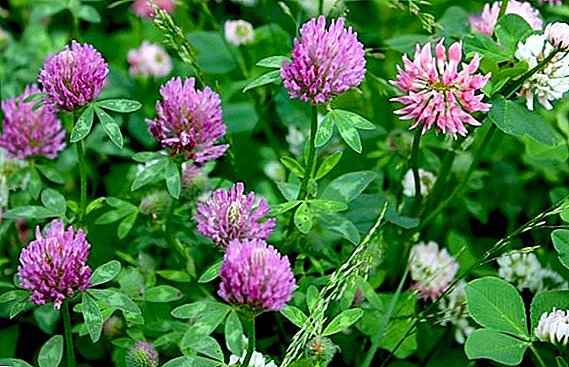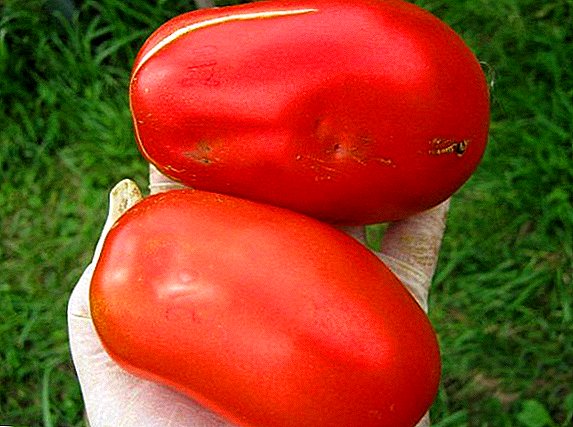
Spathiphyllum Picasso is a beautiful and absolute safe plant that does not cause allergic reactions even in children.
Thanks to an interesting appearance, the plant was given the name "female happiness".
Detailed instructions for the care of Spathiphyllum Picasso are presented in our article.
Detailed feature and appearance
Spathiphyllum Picasso is a perennial evergreen plant that belongs to the family of the Aroids. The homeland of the species is Central and South America, and the plant is also found in Brazil and the Philippines.
The most optimal habitat is the humid climate of swampy forests, near the banks of rivers and lakes.
How it looks: description and photo
Picasso is a hybrid variety that was cultivated in the Netherlands. It reaches a height of 45-50 cm. The stalk is completely absent, the leaf plates grow straight from the root, forming a rosette.
The leaves are fat, with a characteristic luster, reach a width of 20-25 cm. The density of the plates is average, at the ends they are narrowed. Leaf color is heterogeneous - rich green intertwined with white patches. The cuttings are long, bend well. The color is different sail form. The bud tint is white with a delicate green blotch. At the base of the flower has a slight yellow tint. The roots are short.
Below you will see a photo of a flower:



What is the difference from other species?
The main distinguishing feature of Picasso is the extraordinary coloring of colors in which light green is intertwined with white. Houseplants grow sprawling and do not have a particular whimsical care.
History of
The plant was first found in the 19th century by a scientist from Germany by the name of Wallis. Spathiphyllum in translation means "cover sheet." The plant is characterized by a flower that looks like an undeveloped sail.
In the middle of the 20th century, botanists from America and Europe began work on breeding hybrid varieties that would not be distinguished by their capriciousness in cultivation. This sort of Picasso was.
Bloom
When and how?
Spathiphyllum Picasso will release the buds only with proper care. This usually happens at the end of spring - about mid-May. Duration of flowering - 20-25 days. In some cases, the variety dissolves the buds again - in the autumn.
Care before and after
- When the buds ripen, the plant needs to provide abundant watering and good lighting (but remember that the light must be diffused).
- During the flowering period and after transplanting the plant does not need fertilizers.
What if it does not bloom?
The absence of buds signals only the wrong care. Check the capacity for the flower - it should not be too large, 23 cm more than the volume of the root system.
Also review the following care points:

- Lighting. It should be for 12 hours. Move the pot to a lighted place or use artificial lighting.
- Abundance of watering. Watering twice a week should be plentiful. Constantly monitor the condition of the soil - do not let it dry.
- Ensure that the plant does not attack fungal infections and pests. For prevention, treat the flower with insecticides.
Step-by-step care instructions
Choosing a place
Spathiphyllum Picasso loves good lighting. But on the leaf plates should not fall in direct sunlight. Therefore, it is best to stir the pot on the southeast or east side of the room. If you put a pot on the southern window-sill, protect the plant from the sun's rays. To do this, hang on the window sheets of paper.
In the autumn and winter, additional lighting is required (2-3 hours per day) - fitolamps are best suited for this.
What should be the soil?
The ground for Spathiphyllum Picasso must be chosen light, air- and water-permeable. The substrate must be regularly loosened, fertilized and moisturized. The most optimal soil composition:
- peat;
- bark (preferably coniferous trees);
- sand (need large, so it is better to take the river);
All this is taken in the same proportions.
Landing
 It is necessary to transplant a plant in the beginning of spring, when its flowering has not yet begun. Landing Instructions:
It is necessary to transplant a plant in the beginning of spring, when its flowering has not yet begun. Landing Instructions:
- place a drainage layer on the bottom of the pot (its height is 1.5 -2 cm);
- up to half of the pot fill the substrate described above;
- put the plant, with the roots smooth movements spread over the entire surface of the soil, the shoots pressed light pressure;
- from above sypyat the remained soil, stamped;
- water well and wait for the soil to settle;
- add soil to a full pot;
- leaf plates sprayed;
- For the first five days, the seedling is stored under a cellophane cap.
Temperature
Spathiphyllum Picasso belongs to the heat-loving plants. Lowering the temperature of the air to 10 degrees and below can lead to diseases of the flower or its death. The optimum temperature is 19-21 degrees above zero. In the summer, if the air warms up stronger, spray the plant to cool the plant.
Watering
This type of plant loves moisture, so the soil in the pot should be constantly moist. Also an important factor is the humidity of the air - it is kept at the level of 40-50%.
Watering should be twice a week, while pouring water abundantly. Do not moisten the soil often and in small portions. In winter, the frequency of irrigation is reduced to once every seven days.
For additional air humidification, place a container with water next to the flower pot. Steaming, it raises the level of humidity.
Spray a bush every day. Once a week, wipe the leaf plates with a damp cloth - this will protect the leaves from the accumulation of dust that causes illness of the flower.
Top dressing
 In the spring and summer season, the Spathiphyllum Picasso needs intensive feeding. We recommend using complex fertilizers. Get better ready in a specialty store. Top dressings bring in small doses - 1-1.5 g per liter of water is enough. Fertilizers are added together with water, so that useful elements reach the root system.
In the spring and summer season, the Spathiphyllum Picasso needs intensive feeding. We recommend using complex fertilizers. Get better ready in a specialty store. Top dressings bring in small doses - 1-1.5 g per liter of water is enough. Fertilizers are added together with water, so that useful elements reach the root system.
When the plant begins to bloom, stop feeding. For better flowering, Picasso is fertilized with potassium and phosphorus (they are taken in equal proportions).
You can use organic fertilizers - bird droppings. It is made in small portions once a month.
Pruning
As soon as the buds have bloomed, the flower stalks are immediately removed - this is necessary so that the flower stalks do not take nutrients from the plant. Dry leaves are also timely trimmed. Do not forget to remove the affected leaf plates and parts of the root.
After pruning, the slices are treated with crushed charcoal - this procedure will protect the plant from infection.
Transfer
Transplanting is necessary for Spathiphyllum Picasso if the roots have grown strongly. Do it at the very beginning of spring before flowering.
Transplant Algorithm:
- Old soil is moistened, it is allowed to brew for soaking.
- After that, the rhizomes are removed from the pot and cleaned of the old soil.
- The roots are inspected, in the presence of rotten and dry removed.
- At the bottom of the pot lay a drainage layer with a height of 1.5-2 cm.
- Sprinkle with earth (height 2-3 cm).
- Place the plant in a pot and sprinkle with earth until it is completely filled.
- A little water the flower, so that the earth is rammed, then fill up more soil.
- In the first week after transplantation, cover the leaves with plastic. At the same time every day to take it off for airing.
Aerial roots do not need much burial - they will serve as an additional support for the plant.
Step-by-Step Breeding Instructions
Spathiphyllum Picasso multiply by dividing the bush. Carry out this procedure in early spring.
 Breeding Instructions:
Breeding Instructions:
- Remove the flower from the pot, pre-soaking the soil.
- Cut off the dry and affected root processes, treat the cut sites with charcoal.
- After this, the bush is divided. Each seedling should be at least three leaves.
- At the bottom of the pot put drainage, sprinkled with earth.
- Place the seedling in the pot and covered with earth, not pressing the process.
- Abundantly moisten the soil.
If there are no roots on the process, it is placed in water to increase the root system.
Diseases and pests
- Spathiphyllum Picasso can attack the mealybug. To protect it, the plant is treated with a flyerm once every seven days. Well helps the treatment of leaves with soap and water, while the pest is collected manually.
- Spider mite is killed by soap solution with the addition of nicotine sulfate. After processing, the leaves are not washed out, and left for 12 hours. After the indicated time, the sheet plates are rinsed with clean water. At this time, the soil should be covered with foil.
Spathiphyllum Picasso needs constant care. If you regularly carry out all the procedures for the care, the plant will thank with lush and unusual flowering.












